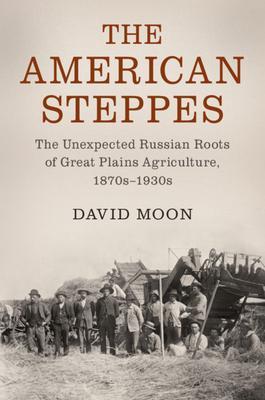Moon, David. The American Steppes: The Unexpected Russian Roots of Great Plains Agriculture, 1870s–1930s. Cambridge: Cambridge University Press, 2020.
Beginning in the 1870s, migrant groups from Russia’s steppes settled in the similar environment of the Great Plains. Many were Mennonites. They brought plants, in particular grain and fodder crops, trees and shrubs, as well as weeds. Following their example, and drawing on the expertise of émigré Russian-Jewish scientists, the US Department of Agriculture introduced more plants, agricultural sciences, especially soil science; and methods of planting trees to shelter the land from the wind. By the 1930s, many of the grain varieties in the Great Plains had been imported from the steppes. The fertile soil was classified using the Russian term ‘chernozem’. The US Forest Service was planting shelterbelts using techniques pioneered in the steppes. And, tumbling across the plains was an invasive weed from the steppes: tumbleweed. Based on archival research in the United States, Russia, Ukraine, and Kazakhstan, this book explores the unexpected Russian roots of Great Plains agriculture. (Source: Cambridge University Press)
David Moon’s The American Steppes is “the first transnational environmental history of the North American Great Plains and the Eurasian steppes.” David Moon is a professor of history at the University of York, an honorary professor at the School of Slavonic and Eastern European Studies at University College London, and a former fellow at the Rachel Carson Center.
© 2020 David Moon and Cambridge University Press


